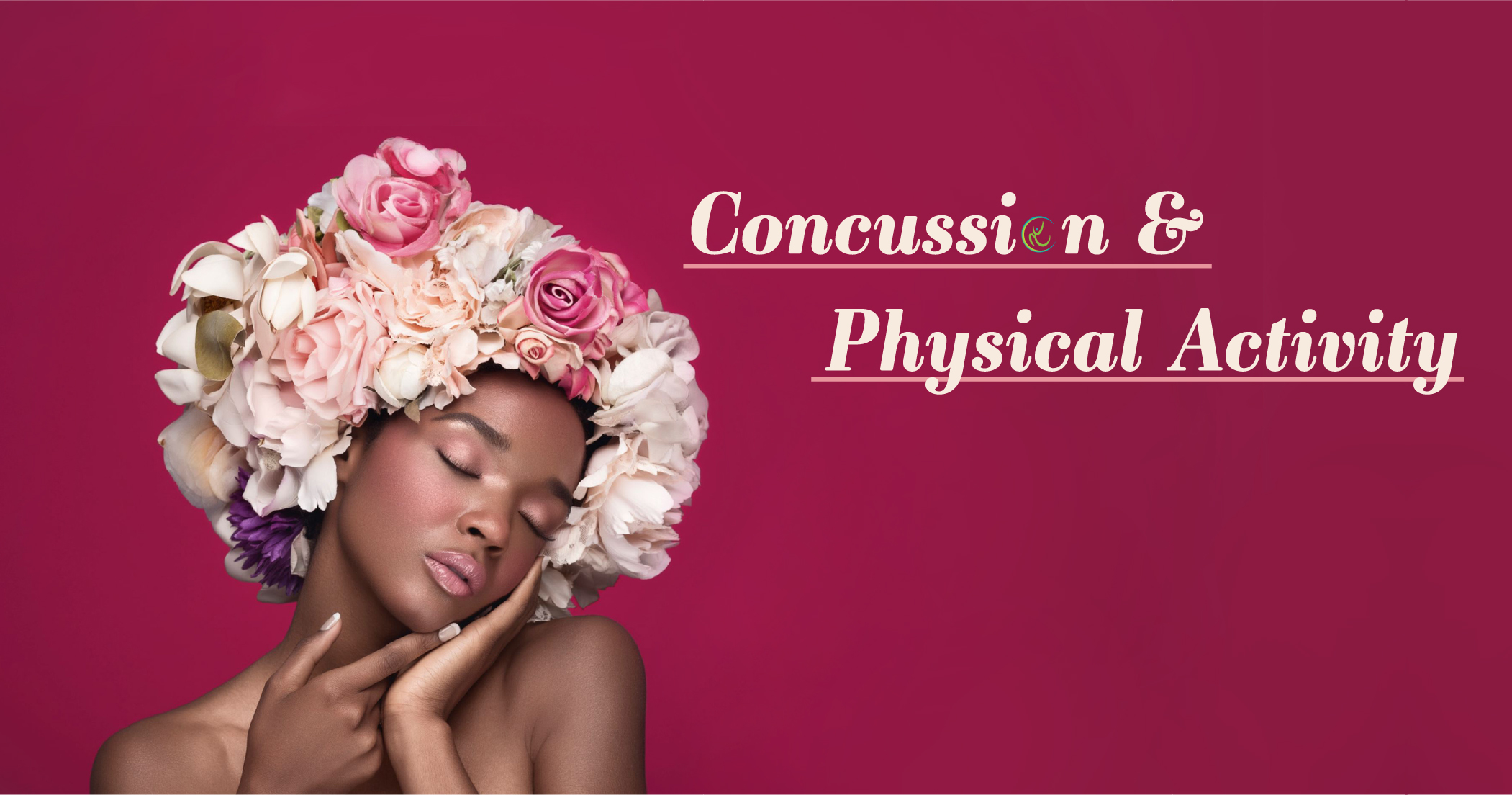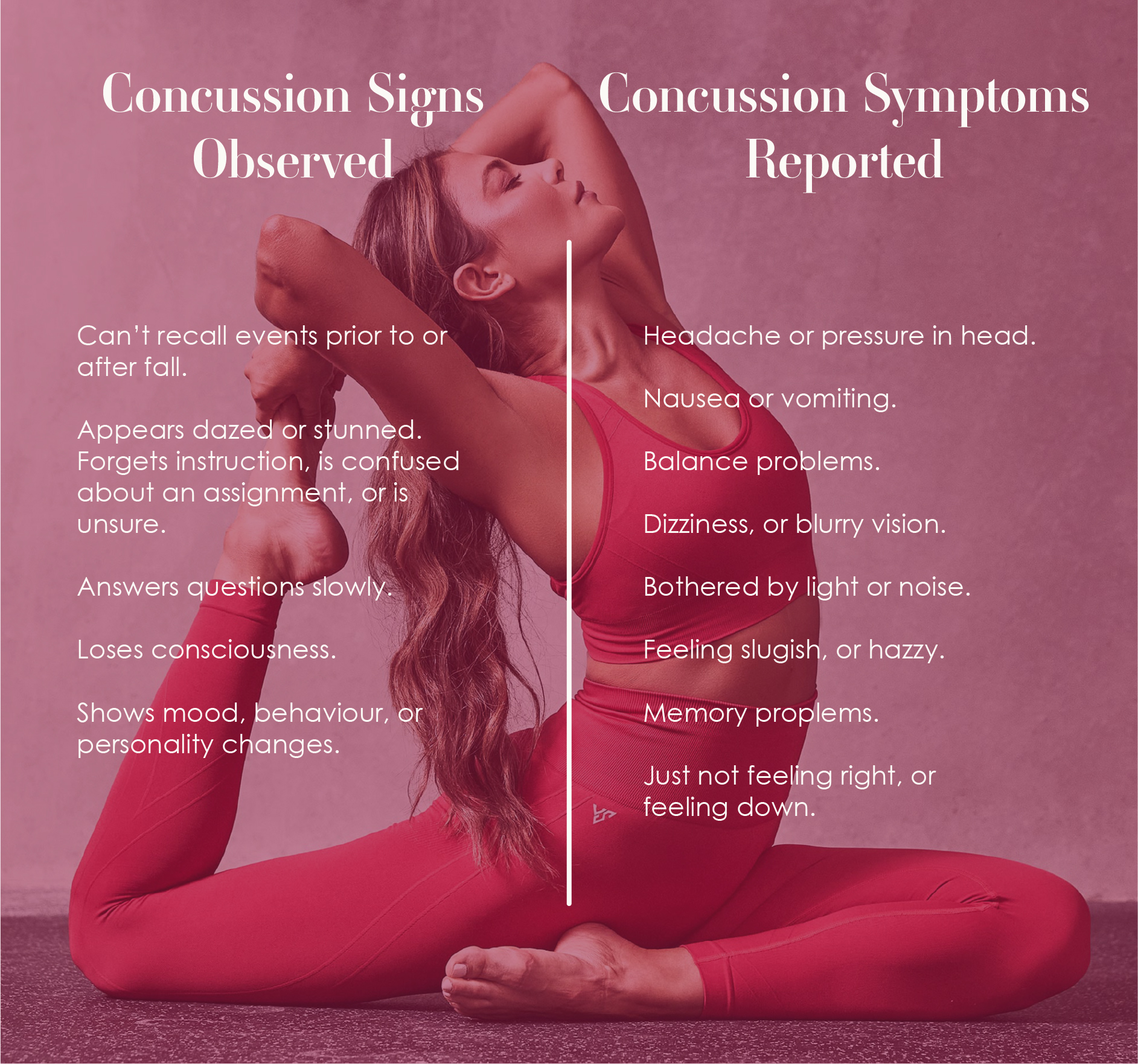
After a concussion, the common thought is to rest until symptoms reside completely. This includes no physical activity as it has been deemed that this may worsen concussion outcomes. However, this is not true! It has been shown that complete rest lasting longer than 2 days can actually result in worse concussion symptoms and outcomes (3). Although it is important to give your brain time to heal, especially immediately after suffering an injury, physical activity has been proven to improve concussion symptoms and trajectory (1). Physical activity with a concussion is important to encourage the release of a protein, BDNF, to improve cognition and symptoms that you may be experiencing. This blog post will explain what a concussion is, physical activity and the benefits it has on the brain and how much you should be engaging in physical activity after your injury.
What is a Concussion and What are the Symptoms?
A concussion is a traumatic brain injury, which is an insult or injury to the brain.
Concussions range on severity level and each concussion is individualized to the person, including the wide range of symptoms and symptom progression. Post-concussion syndrome (PCS) occurs when concussion symptoms persist for months or years after sustaining an injury.
Symptoms of concussions are wide and variable. They can include (but are not limited to):

What is physical activity and how does it benefit the brain?
The World Health Organization defines physical activity as any bodily movement produced by skeletal muscle that requires energy expenditure (3). This includes any activity done throughout the day in leisure, or a part of work. For example, physical activity can include cleaning, walking to work, going for a run, mowing the grass, taking the stairs, etc. Exercise is a type of physical activity, which is an activity done purposefully to improve health or fitness. Physical activity and exercise have important impacts on brain functioning. They increase blood flow to the brain ensuring it has enough oxygen and nutrients to keep us functioning (4). More specifically, exercise creates a release of the chemical called brain-derived neurotrophic factor (BDNF). BDNF is a protein that promotes brain nerve growth and survival. It contributes to neuroplasticity, which is the ability of the brain to rewire itself (4). Neuroplasticity is needed for memory and learning, and to help the brain heal when it is injured. When the brain is injured, there are parts that are severely damaged and may not recover. Neuroplasticity allows the brain to rewire itself so that all parts of the brain are still working. Neuroplasticity takes time, however, BDNF can increase this. This is why it is important to start exercising after your concussion, to increase BDNF to promote brain healing, nerve growth, and neuroplasticity!
When is it ok to start exercising? What should I start by doing?
With a muscle, if you don’t work it, you’re going to lose its strength and endurance. The brain is similar in this sense and that if you don’t exercise, it causes the areas of your brain that were already damaged to malfunction even further. It is recommended

that you may begin in exercise as soon as your symptoms are stable, you want to be able to engage in exercise without any symptoms.
Before exercising you should find your sub-symptom threshold. This threshold is found by determining the period at which your symptoms begin during exercise and then exercise just directly below this threshold. By doing this, you will gradually increase your sub-symptom threshold time and intensity, allowing you to return to exercise. Exercise that is positive and recommended is a light aerobic activity because it does not increase pressure in the skull (5). Positive results have been shown with a stationary bike, treadmill walking/jogging, and the elliptical. Start the aerobic activity at a light intensity and constantly check yourself for symptoms every 5 minutes. The goal is to reach 20-30 minutes of the activity, which then at this point an increase in intensity can be used (by 10%) (5). If at any point you have symptoms, you must STOP the activity. You should be doing this daily, however, If there are symptoms, no exercise should be performed that day.
How can Health Bound Health Network Help?
Here at Health Bound, we can help you with your concussion recovery and return to exercise. Our trained physiotherapists and personal trainers will help you to re-engage in exercise. They can provide concussion-specific exercises and tasks, to help you on your concussion recovery. They will help you find your sub-symptom threshold and monitor your progress to engage in healthy and positive exercise. If you are experiencing symptoms of concussion that are interfering with your daily life, our occupational therapists can support you by providing cognitive intervention, adaptation, and techniques.
Overall:
Physical activity and exercise are needed after a concussion to increase BDNF to promote healthy brain healing, recovery, and neuroplasticity! This can help decrease your symptoms and improve your quality of life!
Some key reminders!
-
Listen to your brain
-
Don’t push past your symptoms, it will not help you in the long run and keep you out for longer.
-
It’s easy to get frustrated, so remember that you are healing, and it will take time.
-
There is no timeline for brain recovery, so be patient with yourself and your symptoms!
-
STOP when you get symptoms!!
About the Author
Hello!
My name is Sarah Schulz and I am a registered Occupational Therapist at Health Bound. At Health Bound, my role is to help individuals return to their daily life, through using adaptations, techniques, different treatments, and education. I help people transition from hospital to home and do a lot of discharge planning. I am particularly passionate about traumatic brain injury/ concussion rehabilitation, orthopedic injuries, and hand therapy. During my free time, I can be found teaching a spin class or hanging out with my dog! For updates and to stay connected with our team follow us on social media @healthbound.hn
Additional Resources:
Sunnybrook Health Sciences Centre- Mild TBI/ Concussion, Your Guide to Recovery:
https://sunnybrook.ca/content/?page=bsp-concussion-sports
Complete Concussion Management:
https://completeconcussions.com/2019/10/01/what-to-do-after-concussion-rest-or-exercise/
Concussion Legacy Foundation Canada
https://www.concussionfoundation.ca
Toronto ABI Network
https://abinetwork.ca/individuals-families/concussions/concussion-resources/
Canadian Concussion Collaborative
https://casem-acmse.org/resources/canadian-concussion-collaborative/
Photo Credit: Joey Rosado






